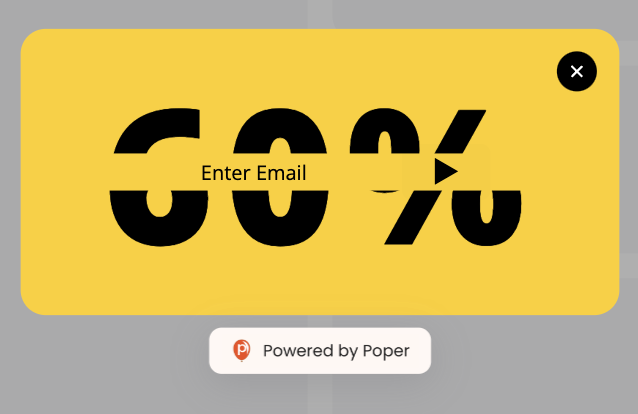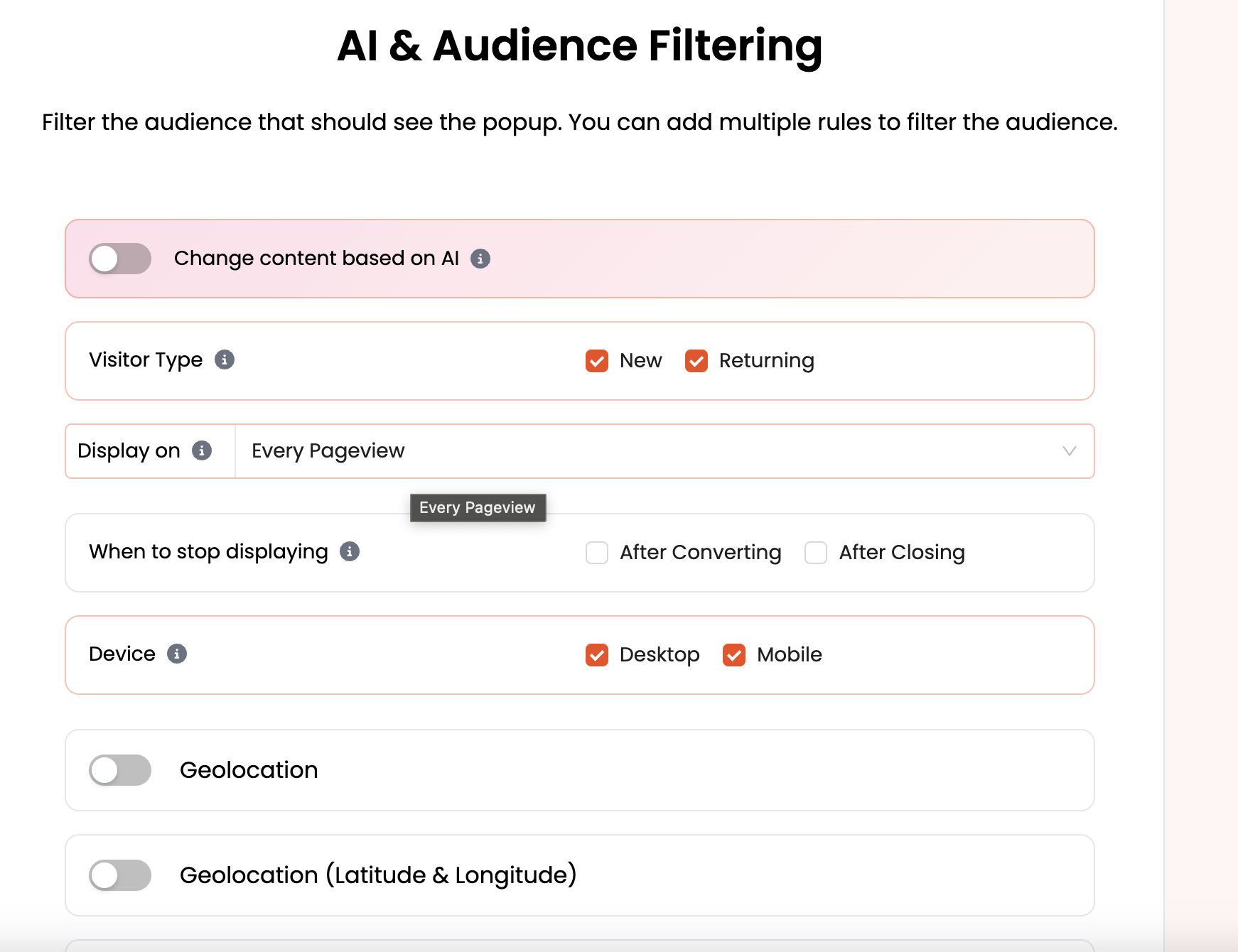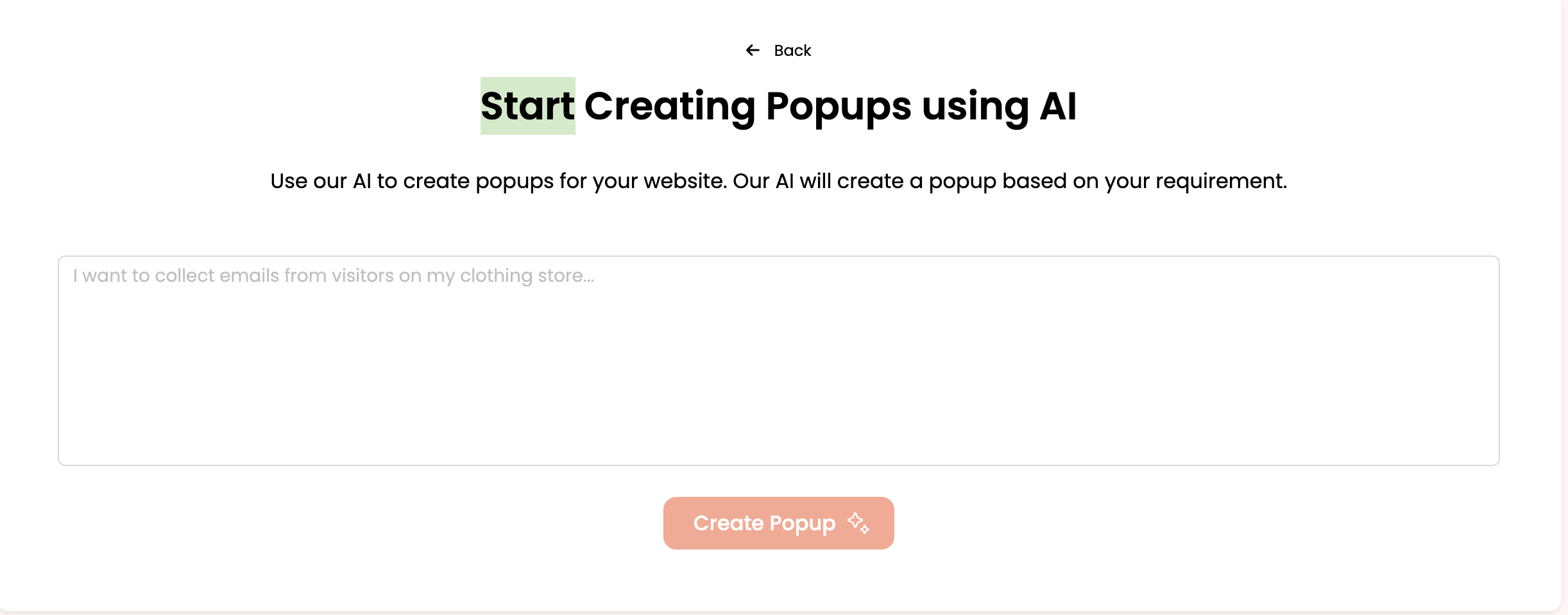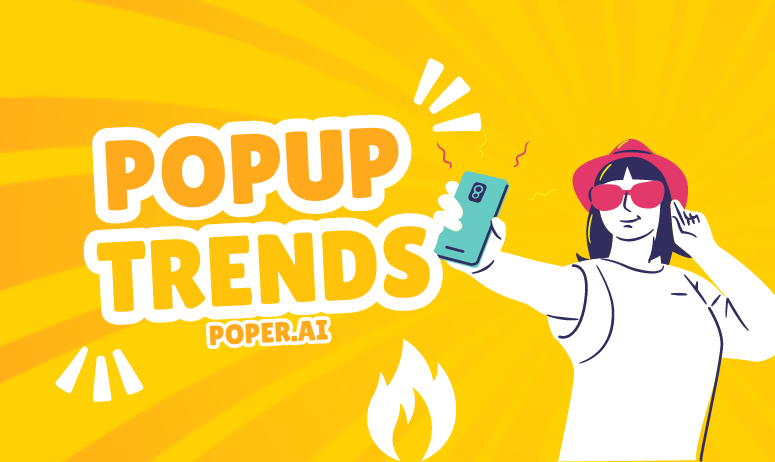The Importance of Staying Updated with Popup Trends
In the fast-paced world of digital marketing, staying updated with the latest trends is essential for maintaining a competitive edge. Popups, despite their simplicity, have evolved significantly and continue to be a powerful tool for capturing leads, driving conversions, and enhancing user engagement. Understanding and implementing the latest popup trends can help marketers create more effective and user-friendly experiences.
Innovation distinguishes between a leader and a follower.
Steve Jobs
As user preferences and technologies change, so do the strategies for engaging visitors. Keeping up with these trends not only improves the effectiveness of your marketing efforts but also ensures that you provide a seamless and enjoyable user experience.
Emerging Design Trends

Minimalist Popup Designs
In 2025, minimalist designs are taking center stage. Simplicity and clarity are the keys to capturing user attention without overwhelming them. Minimalist popups focus on clean lines, ample white space, and straightforward messaging, ensuring that the core message stands out.
Use of Bold Colors and Typography
Bold colors and typography are becoming popular in popup design. Vibrant colors can draw attention, while strong typography can make the message clear and impactful. These elements help create visually appealing popups that are hard to ignore.
Animated and Interactive Popups
Animations and interactivity add a dynamic element to popups, making them more engaging. Animated popups can include subtle movements or transitions that attract attention without being disruptive. Interactive elements, such as buttons or forms, encourage user participation and increase engagement.
Incorporating AR and VR Elements
Augmented Reality (AR) and Virtual Reality (VR) are being incorporated into popups to create immersive experiences. These technologies can provide unique and engaging ways to present information, showcase products, or entertain users, offering a cutting-edge way to capture attention.
Advanced Targeting Techniques

Behavioral Targeting
Behavioral targeting involves displaying popups based on user actions and behavior on the site. This ensures that the popup content is highly relevant, increasing the likelihood of conversion. For example, showing a special offer to users who have spent a certain amount of time on a product page can drive more purchases.
Geolocation-Based Popups
Geolocation-based targeting uses the user's location to deliver personalized messages. This technique can be used to promote location-specific offers, events, or services, making the popups more relevant and effective.
Real-Time Personalization
Real-time personalization adjusts the popup content based on real-time data and interactions. This dynamic approach ensures that the popups are always relevant, providing users with timely and personalized messages that increase engagement.
AI-Driven Popups
AI-driven popups use artificial intelligence to analyze user behavior and preferences, delivering highly personalized experiences. AI can predict user needs and present the most relevant content, enhancing the overall effectiveness of the popups.
Enhanced User Experience
Non-Intrusive Popup Techniques
One of the key trends in 2025 is the focus on non-intrusive popup techniques. Popups should enhance the user experience, not disrupt it. Implementing strategies like timed popups, exit-intent popups, and scroll-triggered popups ensures that users are not bombarded with messages the moment they land on a page. This approach respects the user's browsing experience while still delivering important messages.
Mobile-Optimized Popups
With the increasing use of mobile devices for browsing, mobile-optimized popups are essential. Popups should be responsive, ensuring they look great and function well on all screen sizes. This includes making sure that the popup content is easily readable and the call-to-action buttons are large enough to be tapped on small screens.
Accessibility Features in Popups
Ensuring that popups are accessible to all users, including those with disabilities, is becoming increasingly important. Incorporating accessibility features such as keyboard navigation, screen reader compatibility, and clear focus indicators helps make popups usable for everyone. This not only improves the user experience but also demonstrates a commitment to inclusivity.
Seamless Integration with Website UX
Popups should seamlessly integrate with the overall website user experience (UX). This means matching the design and tone of the website, as well as ensuring that popups do not interfere with essential content or navigation. Popups that are well-integrated enhance the user journey rather than interrupt it.
Personalization and Dynamic Content
Leveraging User Data for Personalization
Personalization is a powerful tool for increasing the effectiveness of popups. By leveraging user data, such as browsing history, past purchases, and behavior on the site, popups can be tailored to meet the specific needs and interests of each user. This makes the messages more relevant and engaging, leading to higher conversion rates.
Dynamic Content Based on User Behavior
Dynamic content changes in real-time based on user interactions. Popups with dynamic content can adapt to show the most relevant offers or messages, increasing the chances of user engagement. For example, a user who frequently visits a particular product category might see popups with related offers or recommendations.
Multi-Step Popups for Enhanced Engagement
Multi-step popups break the process into several steps, making it less overwhelming for the user. For example, the first step might ask for an email address, and the second step could offer a discount code or additional information. This approach can increase engagement and completion rates by simplifying the user's decision-making process.
Personalized Product Recommendations
Using popups to deliver personalized product recommendations can significantly enhance the shopping experience. By analyzing user data and purchase history, popups can suggest products that the user is likely to be interested in. This not only helps increase sales but also improves customer satisfaction by providing a more tailored shopping experience.
Integration with Other Marketing Channels
Popups for Social Media Engagement
Integrating popups with social media can enhance your overall marketing strategy. Popups can encourage visitors to follow your social media profiles, share content, or participate in social media contests. This not only increases your social media following but also drives more engagement and brand visibility.
Integrating Popups with Email Marketing Campaigns
Popups are a powerful tool for building your email list. By integrating popups with your email marketing campaigns, you can capture new leads and nurture them through targeted email sequences. This integration ensures that new subscribers receive timely and relevant content, increasing the chances of conversion.
Using Popups for Cross-Selling and Upselling
Popups can be used to promote related products or higher-value items to customers who are already making a purchase. Cross-selling and upselling through popups can increase the average order value and boost sales. For example, showing a popup with accessories related to the items in the user's cart can encourage additional purchases.
Popups in Video Marketing
Incorporating popups into video marketing can enhance viewer engagement. Popups can be used within videos to highlight key messages, promote special offers, or capture leads. This interactive element can make video content more engaging and effective in driving conversions.
Automation and AI

AI-Powered Popup Customization
Artificial Intelligence (AI) is transforming the way popups are customized. AI-powered tools can analyze user behavior and preferences to automatically create personalized popup content. This ensures that each user sees the most relevant and engaging message, improving conversion rates.
Automated Popup Campaigns
Automation allows for the creation of popup campaigns that run without manual intervention. Automated popup campaigns can be set up to trigger based on specific user actions or events, ensuring timely and relevant interactions. This saves time and effort while maintaining high levels of engagement.
Predictive Analytics for Popup Optimization
Predictive analytics uses historical data to forecast future user behavior. By applying predictive analytics to popups, marketers can anticipate user needs and preferences, optimizing popup content and timing for maximum impact. This data-driven approach enhances the effectiveness of popup campaigns.
Machine Learning in Popup Performance Analysis
Machine learning algorithms can analyze large datasets to identify patterns and insights. Using machine learning for popup performance analysis allows for continuous improvement based on real-time data. This ensures that popups are constantly optimized for better results.
Measuring and Analyzing Popup Performance
Key Metrics for Popup Success
Tracking the right metrics is essential to understand the effectiveness of your popups. Key metrics to monitor include conversion rate, bounce rate, time on page, and exit rate. These metrics provide insights into user behavior and the impact of your popups.
Important Metrics to Track
Conversion Rate: The percentage of visitors who complete the desired action (e.g., subscribing).
Bounce Rate: The percentage of visitors who leave the site after seeing a popup.
Time on Page: The amount of time visitors spend on the page after interacting with a popup.
Exit Rate: The percentage of visitors who leave the site from a specific page after seeing a popup.
A/B Testing Strategies for Popups
A/B testing involves comparing two or more versions of a popup to determine which performs better. This strategy helps optimize popup design, messaging, and timing.
Steps for Effective A/B Testing
Define Variables: Decide what elements to test (e.g., headline, CTA, color).
Create Variations: Develop different versions of the popup with varying elements.
Run Tests Simultaneously: Show different versions to different segments of your audience.
Analyze Results: Compare the performance of each version to determine the best approach.
Using Analytics Tools to Measure Effectiveness
Using analytics tools helps gather data on popup performance and user behavior. Tools like Google Analytics, Hotjar, and built-in analytics in popup plugins provide valuable insights.
Recommended Analytics Tools
Google Analytics: Track user interactions and conversion rates.
Hotjar: Analyze user behavior with heatmaps and session recordings.
Popup Plugin Analytics: Utilize built-in analytics features for detailed performance data.
Continuous Improvement Based on Data Insights
Continuous improvement involves regularly reviewing performance data and making adjustments to optimize popups. Use insights from analytics to refine design, messaging, and targeting strategies.
Best Practices for Continuous Improvement
Regular Reviews: Schedule regular performance reviews to stay updated on popup effectiveness.
Iterative Testing: Continuously test new variations and strategies.
User Feedback: Collect and incorporate user feedback to enhance popups.
Poper: The Ultimate Popup Tool for 2025
Overview of Poper and Its Capabilities
Poper is a leading popup tool designed to help businesses create, manage, and optimize popups. With a user-friendly interface and advanced features, Poper stands out as the ultimate solution for effective popup campaigns in 2025.
Unique Features of Poper
User-Friendly Interface
Poper's intuitive interface makes it easy for users of all skill levels to create and customize popups. The drag-and-drop editor and pre-designed templates simplify the design process, ensuring professional results.
Advanced Targeting Options
Poper offers a range of targeting options, including behavioral targeting, geolocation, and real-time personalization. These advanced targeting features ensure that popups are shown to the right audience at the right time.
Customizable Templates
With a variety of customizable templates, Poper allows users to create visually appealing popups that align with their brand. Templates can be easily modified to include unique colors, fonts, and images.
AI-Driven Personalization
Poper leverages artificial intelligence to deliver personalized popup experiences. AI analyzes user behavior and preferences to automatically create relevant and engaging popup content.
How Poper Aligns with 2025 Popup Trends
Poper is well-equipped to help businesses stay ahead of the latest popup trends. Its advanced features and customization options align perfectly with the emerging trends in design, targeting, user experience, and personalization.
Aligning with Design Trends
Poper supports minimalist designs, bold colors, and interactive elements, ensuring that popups are both effective and visually appealing.
Enhancing User Experience
With features like mobile optimization and accessibility, Poper ensures that popups provide a seamless and inclusive user experience.
Leveraging AI and Automation
Poper's AI-driven personalization and automated campaigns help businesses optimize popup performance and relevance.
Step-by-Step Guide to Using Poper
Installing and Setting Up Poper
Getting started with Poper is straightforward and user-friendly. Follow these steps to install and set up Poper on your WordPress site:
Download Poper:
Visit the WordPress plugin repository or Poper's official website to download the plugin.
Upload and Install:
Navigate to your WordPress dashboard, go to 'Plugins,' click 'Add New,' upload the Poper plugin file, and click 'Install Now.'
Activate the Plugin:
Once installed, click 'Activate' to enable Poper on your site.
Initial Configuration:
Follow the setup wizard to configure basic settings such as default templates, targeting rules, and integration options.
Creating Your First Popup with Poper
Creating your first popup with Poper is a breeze thanks to its intuitive design interface. Here’s how to create a compelling popup:
Choose a Template:
Select a template from Poper’s extensive library that suits your campaign goals.
Customize the Design:
Use the drag-and-drop editor to modify the template. Adjust colors, fonts, images, and text to match your brand’s aesthetic.
Set Up Triggers:
Define when and where your popup should appear using Poper’s advanced targeting options, such as exit-intent, scroll percentage, or time on page.
Add a Call to Action:
Include a strong call to action that encourages users to subscribe, download, or engage with your offer.
Advanced Customization and Personalization
Poper allows for advanced customization and personalization to make your popups more engaging and relevant. Here’s how to leverage these features:
Behavioral Targeting:
Use behavioral data to target popups based on user actions and preferences, such as previous purchases or browsing history.
Dynamic Content:
Create dynamic popups that change content in real-time based on user interactions and data.
Personalized Offers:
Tailor offers and messages to individual users based on their demographics, location, and behavior.
Multi-Step Popups:
Design multi-step popups that guide users through a series of actions, such as collecting an email address first and then offering a discount code.
Integrating Poper with Other Marketing Tools
Integration with other marketing tools enhances the functionality of Poper. Here’s how to integrate Poper with your existing marketing stack:
Email Marketing Platforms:
Connect Poper with email marketing platforms like Mailchimp, Constant Contact, or HubSpot to automatically add new subscribers to your email lists.
CRM Systems:
Integrate with CRM systems to manage leads and customer data more effectively.
Analytics Tools:
Link Poper with analytics tools like Google Analytics to track performance and user behavior.
Social Media:
Use popups to encourage social media engagement by integrating with platforms like Facebook and Instagram.
Monitoring and Optimizing Popup Performance with Poper
Continuous monitoring and optimization are key to successful popup campaigns. Poper provides comprehensive tools for tracking and improving popup performance:
Analytics Dashboard:
Access detailed analytics on conversion rates, click-through rates, and user interactions.
A/B Testing:
Set up A/B tests to compare different popup designs and strategies. Use the insights gained to optimize for better results.
Real-Time Reports:
View real-time performance reports to make immediate adjustments and improvements.
Feedback Loop:
Collect user feedback through popups to understand their experience and make necessary changes.
Future Predictions for Popups Beyond 2025
The Role of AI and Machine Learning
AI and machine learning will continue to play a significant role in the evolution of popups. These technologies will enable even more precise targeting and personalization, making popups more relevant and effective.
Increased Use of AR and VR
The integration of augmented reality (AR) and virtual reality (VR) into popups will provide immersive experiences that captivate users. AR and VR popups can showcase products in new and exciting ways, driving higher engagement and conversion rates.
Greater Emphasis on User Privacy
With increasing concerns about data privacy, future popups will prioritize user consent and transparency. Popups will need to be fully compliant with privacy regulations, ensuring that user data is collected and used ethically.
Evolution of Interactive Popups
Interactive popups will become more sophisticated, offering users a more engaging experience. From gamified popups to interactive quizzes, the future will see a rise in creative and interactive popup designs that captivate users.
FAQs
What are the key design trends for popups in 2025?
The key design trends for popups in 2025 include minimalist designs, the use of bold colors and typography, animated and interactive elements, and the incorporation of AR and VR. These trends enhance visual appeal and user engagement.
How can AI improve popup effectiveness?
AI improves popup effectiveness by analyzing user behavior and preferences to deliver personalized and relevant content. AI-driven popups ensure that users see messages that are most likely to resonate with them, leading to higher engagement and conversions.
What are the legal considerations for using popups?
Legal considerations for using popups include ensuring GDPR compliance, protecting user privacy, and obtaining explicit consent for data collection. Implementing transparency and consent management practices is essential for ethical and legal popup use.
How does Poper help in creating effective popups?
Poper helps in creating effective popups with its user-friendly interface, advanced targeting options, customizable templates, and AI-driven personalization. These features ensure that popups are engaging, relevant, and effective in capturing leads and driving conversions.
What metrics should I track to measure popup success?
To measure popup success, track key metrics such as conversion rate, bounce rate, time on page, and exit rate. These metrics provide insights into user behavior and the effectiveness of your popups, allowing for continuous optimization and improvement.
Conclusion
The key popup trends for 2025 include minimalist designs, advanced targeting techniques, enhanced user experience, personalization and dynamic content, integration with other marketing channels, and the use of automation and AI. Staying updated with these trends is essential for effective digital marketing.




